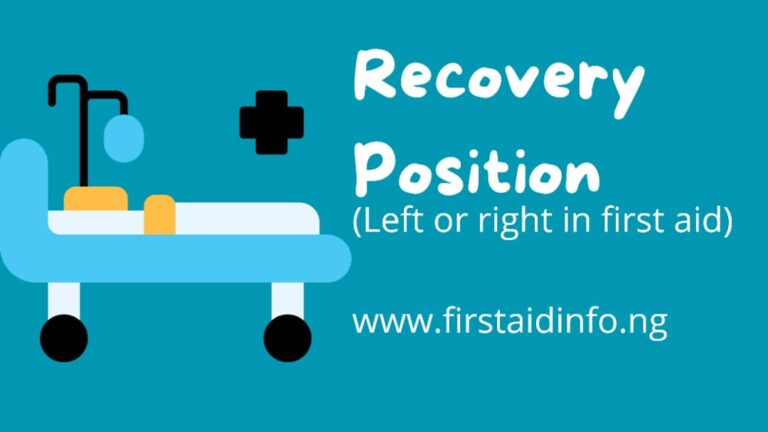The Lifesaving Art of Recovery Positions in First Aid: Left or Right?
Imagine this scenario: You come across someone who has lost consciousness, perhaps due to an accident or a medical emergency. You’ve called for help, but what can you do to keep them safe until professional help arrives? Enter the recovery position in first aid, a vital technique that can make a world of difference in such situations. In this comprehensive guide, we will explore what the recovery position is, its purpose, the steps to place someone into it, its role in first aid, and whether it truly works.
What is the Recovery Position in First Aid?
The recovery position, also known as the lateral recumbent position, is a specific posture in which an unconscious but breathing person is placed. It involves turning the individual onto their side, usually with their upper leg bent at a right angle to their body. This position helps maintain an open airway and prevents the tongue from blocking it.
What is the Purpose of the Recovery Position?
The primary purpose of placing an unconscious person in the recovery position is to ensure their airway remains clear and unobstructed. This is crucial because, in an unconscious state, the tongue and other tissues in the throat can relax and block the airway, potentially leading to suffocation.
Additionally, the recovery position:
Helps prevent aspiration: It reduces the risk of vomit or fluids entering the lungs, which can cause aspiration pneumonia.
Maintains comfort: The recovery position offers a relatively comfortable and stable posture for the unconscious individual.
Aids in monitoring: Placing someone in this position allows you to easily monitor their breathing and condition while awaiting professional medical assistance.
Steps to Place Someone into the Recovery Position (Right Side)
Here are the steps to follow when placing an unconscious person into the recovery position on their right side:
- Check for Danger: Ensure the scene is safe for both you and the victim.
- Check Responsiveness: Gently tap the person and shout their name to check if they respond.
- Open the Airway: If the person does not respond, open their airway by tilting their head back slightly.
- Check for Breathing: Look, listen, and feel for signs of breathing. If they are breathing, place them into the recovery position.
- Bend the Knee: Kneel beside the person. Place their arm nearest to you at a right angle to their body, with their hand under their cheek to support their head. Bend the knee farthest from you to a right angle.
- Roll Towards You: Carefully roll the person onto their side towards you, ensuring their top knee remains bent at a right angle. Their head should be supported by their arm.
- Adjust the Airway: Tilt the head back slightly to keep the airway open, and make sure the person’s mouth and nose are facing downward to allow any fluids to drain.
- Monitor Vital Signs: Stay with the person and monitor their breathing and pulse until professional help arrives.
Recovery Positions: Role in First Aid and Efficacy
The recovery position is a cornerstone of first aid for unconscious individuals.
Its effectiveness lies in its ability to maintain an open airway, which is critical for breathing and preventing suffocation.
When performed correctly, it significantly reduces the risk of complications such as aspiration, which can have serious consequences.
However, it’s essential to note that the recovery position is not suitable for individuals with suspected spinal injuries or those who have experienced trauma to the head, neck, or spine. In such cases, immobilization and professional medical evaluation are required.
In conclusion: the recovery position in first aid, whether placed on the left or right side (both are acceptable), serves a vital role in maintaining the airway of unconscious individuals. It is a simple yet highly effective technique that can be performed by bystanders to ensure the safety and well-being of those in need until professional medical help arrives. When executed correctly, the recovery position can be a lifesaver, providing valuable time for intervention and care.


